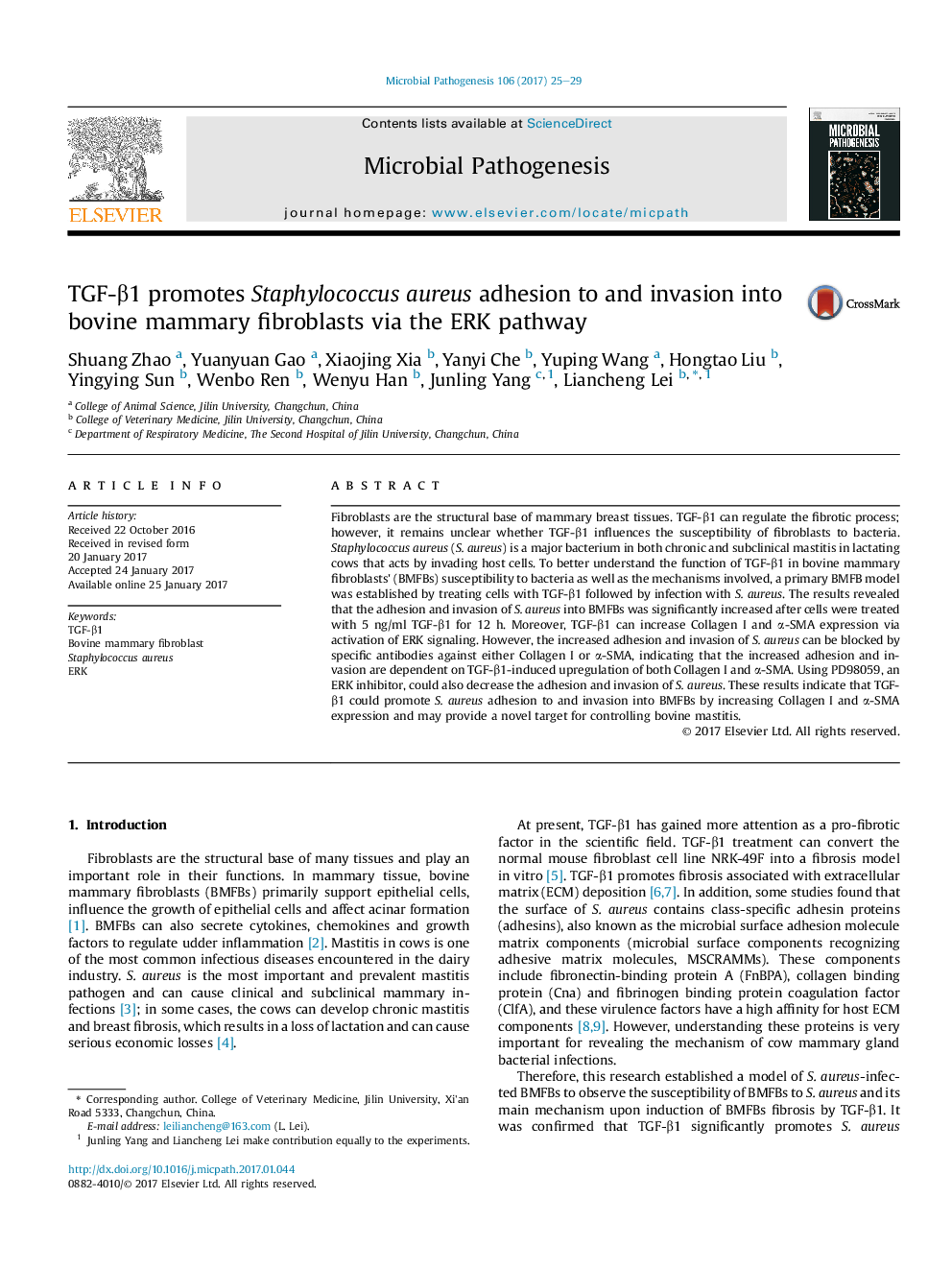| Article ID | Journal | Published Year | Pages | File Type |
|---|---|---|---|---|
| 5674062 | Microbial Pathogenesis | 2017 | 5 Pages |
Abstract
Fibroblasts are the structural base of mammary breast tissues. TGF-β1 can regulate the fibrotic process; however, it remains unclear whether TGF-β1 influences the susceptibility of fibroblasts to bacteria. Staphylococcus aureus (S. aureus) is a major bacterium in both chronic and subclinical mastitis in lactating cows that acts by invading host cells. To better understand the function of TGF-β1 in bovine mammary fibroblasts' (BMFBs) susceptibility to bacteria as well as the mechanisms involved, a primary BMFB model was established by treating cells with TGF-β1 followed by infection with S. aureus. The results revealed that the adhesion and invasion of S. aureus into BMFBs was significantly increased after cells were treated with 5 ng/ml TGF-β1 for 12 h. Moreover, TGF-β1 can increase Collagen I and α-SMA expression via activation of ERK signaling. However, the increased adhesion and invasion of S. aureus can be blocked by specific antibodies against either Collagen I or α-SMA, indicating that the increased adhesion and invasion are dependent on TGF-β1-induced upregulation of both Collagen I and α-SMA. Using PD98059, an ERK inhibitor, could also decrease the adhesion and invasion of S. aureus. These results indicate that TGF-β1 could promote S. aureus adhesion to and invasion into BMFBs by increasing Collagen I and α-SMA expression and may provide a novel target for controlling bovine mastitis.
Keywords
Related Topics
Life Sciences
Immunology and Microbiology
Microbiology
Authors
Shuang Zhao, Yuanyuan Gao, Xiaojing Xia, Yanyi Che, Yuping Wang, Hongtao Liu, Yingying Sun, Wenbo Ren, Wenyu Han, Junling Yang, Liancheng Lei,
